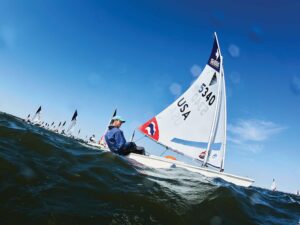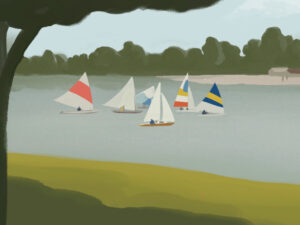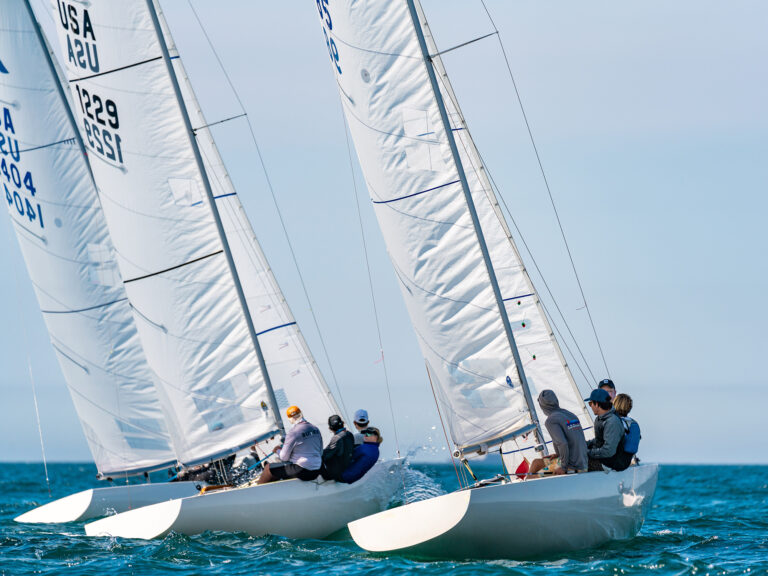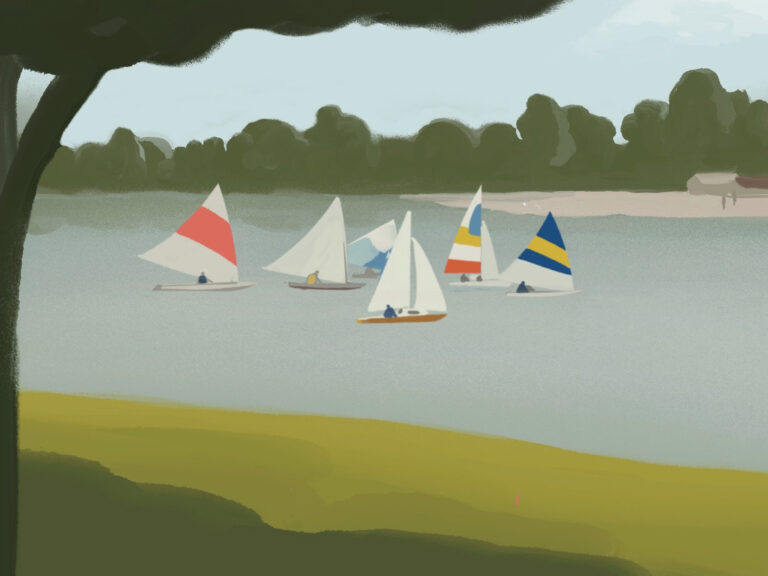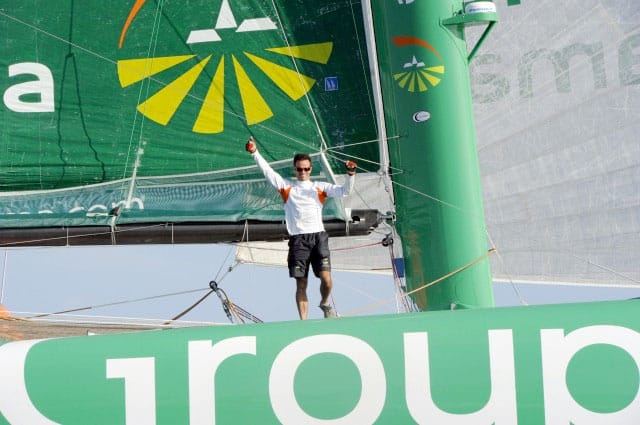
101112_Cammas
Franck Cammas didn’t shatter the course record, but managed Tuesday to bring Groupama 3 across the Atlantic from France to finish first in the Ultimate Class of the 3,540-mile Route du Rhum race. Cammas took the time to speak with Sailing World by phone from Guadeloupe. He said he had spent the last two days celebrating and was still trying to catch up on his sleep. But he still had a lot to say about what went right during the race and the tremendous physical and strategic challenges he faced.
How did the weather and sea conditions factor in the race? Were they what you had hoped for?
We had to decide between taking the northerly or southerly route. I knew before the race started that one of these routes would be a better choice, but obviously, I was not sure what the best route would be beforehand. In fact, our choice to take the southerly route was made very late. It was obviously an important decision and I did not know whether I had made the right choice or not until later.
The northerly option seemed to be the best choice out of all of the possible routes we had studied before the departure, but we changed our decision a few hours after the start of the race. I found an optimal route just beneath the high-pressure zone, so it was then that I decided to take the southerly route.
So you were able take advantage of breezy tailwinds?
Yes, the downwinds are definitely better for a multihull because first of all, with the downwinds, I didn’t have to change the sails as often as I would have had to do in upwinds. I didn’t have to change the sails in a range of wind speeds from 10 to 25 knots when sailing downwind. Groupama 3 was also designed to go fast downwinds and is not well adapted for upwind sailing. We were able to take advantage of these good wind conditions from the beginning of the race.
So you rolled the dice when choosing the best route?
Yes, the southerly route was definitely the best route for me and the boat. I was able to pass the Finistère region [of France] quickly during the first night, and the others who followed my route were handicapped because they were not able to stay ahead of the high-pressure zone like I was.
**Groupama 3 was designed for a crew and you had only navigated the boat solo for 2,500 miles prior to the race. What did you learn about the boat and yourself? **
Yes, 2,500 miles are not a lot and the wind conditions were not very strong during those miles, which is why I faced many unknowns going into the race. I definitely learned a lot about the boat.
I learned to master the different maneuvers in a wide range of wind conditions and even found some ways to do things better, such as learning to better stay on course and to avoid breaking something. I definitely know a lot more about the boat now than I did at the beginning of the race.
I was able to successfully do riskier maneuvers, such as jibing in the breezy conditions I met in a low-pressure weather front I experienced after the Azores. I definitely gained more and more confidence in myself to do these maneuvers on the boat.
When sailing solo on Groupama 3, you can expect to do five knots less on average than what you can expect to do with a crew, but still, the boat went faster than the competition many times during the race.
What was jibing like on Groupama 3?
It really went well. The boast remained stable, although I had to take care not to cause a breakage, like damaging the gennaker.
**How much were you able to sleep per day during the race? **
I was able to sleep for 20 minutes at a time, which is not a lot. Sometimes, I was able to sleep for two hours per night, but that was the most sleep I got during any one stretch.
What was the physical effort like when jibing or coming about on such a big multihull boat?
These maneuvers definitely take longer than they would on a singlehull 60-foot boat, so I really had to take my time and to be patient. It definitely required a strenuous physical effort, like intensely cycling each time. It is definitely a factor that is [much more important] than on smaller boats. I definitely got my heart rate up to 160 beats per minute each time. It was like running an 800-meter race.
Doing things like putting up or taking down the gennaker can take 15 minutes, which is not that long, but it requires an intensive physical effort, like running as fast as you can for 800 meters. You really have to give 100 percent.
What were the psychological challenges that you faced?
I really wasn’t challenged that much psychologically. I was often pleasantly surprised by the boat’s performance. But at the same time, it is very difficult to cross the Atlantic alone on a multihull boat so it is necessary to remain concentrated on the boat and worrying about handling the boat 24 hours a day alone represents a major source of stress.
But I was also in a good position compared to the others since I was ahead in the race, which was positive. The morale is always good when you are winning.
What are the Groupama 3’s limits weather-wise and what were the most severe wind and wave conditions you faced during the race?
When navigating solo, I can’t answer that question yet since I haven’t had a chance to test Groupama 3’s limits alone, but 50 to 60 knots, I think, are manageable. There is no reason to say that you cannot cross the Atlantic alone on Groupama 3 in 50-knot winds. The boat was designed for these conditions. But by virtue of its size, I think Groupama 3 can handle stronger winds and wave conditions than a 60-foot trimaran can, such as Groupama 2.
I did experience 45-knot tailwinds for an hour when it was raining hard. I took the helm then and the boat felt steady. On a 60-foot trimaran when the wind speed all of the sudden doubles, you can quickly have problems. With Groupama 3, I had a bigger margin with which to maneuver when the wind reached 45 knots.
So what’s next? Do you jump right into preparation for the Volvo Race? Or do you have a vacation planned?
I plan to devote all of my energy to the Volvo Race beginning next week. But yes, I definitely will take a vacation before then. But my vacation will be short.


